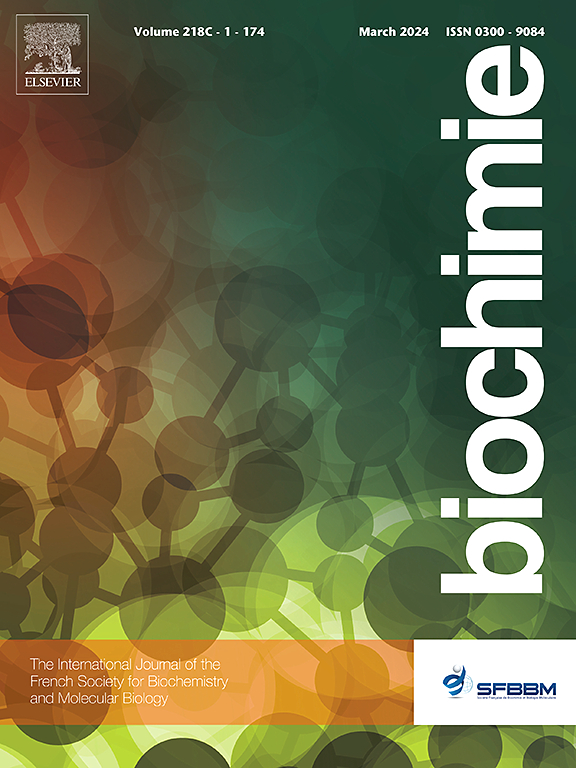Venom versatility: Dynamic anticoagulant and procoagulant variations between and within Bothrocophias (toad-head) and basal Bothrops (lance-head) pit vipers
IF 3
3区 生物学
Q2 BIOCHEMISTRY & MOLECULAR BIOLOGY
引用次数: 0
Abstract
Pinpointing the emergence of toxicological evolutionary novelties can be challenging. In American pit vipers, anticoagulant venoms are the paradigm, with a notable exception being the genus Bothrops, which are typically procoagulant. A recent study found that the basal Bothrops (B. pictus) is anticoagulant, raising two competing hypotheses: ancestral Bothrops were anticoagulant with procoagulant venom evolving later, or ancestral Bothrops were procoagulant with anticoagulant venom in B. pictus being a derived trait. To help resolve this, we tested venoms of the sister genus Bothrocophias for pathophysiological actions upon blood clotting. The Ecuadorian Bothrocophias venoms (B. campbelli, B. lojanus, and B. microphthalmus) were compared to Bothrops pictus. Both Bothrocophias lojanus and B. pictus inhibited various blood clotting enzymes, but B. pictus was more potently anticoagulant. Intriguingly, B. campbelli and B. microphthalmus were procoagulant. Both B. microphthalmus populations activated prothrombin, but Zamora Chinchipe locality also activated Factors X and VII. Bothrocophias campbelli showed a novel activity, using Factor Va in a calcium-dependent manner as a cofactor to activate prothrombin, the first time this has been shown for any viperid venom. Organismal phylogenetics failed to resolve the relative positions of B. campbelli and B. lojanus, thus we were unable to ascertain the ancestral trait. To resolve this, more phylogenetic research and venom testing with other Bothrocophias species is needed. Neutralisation tests revealed differential efficacy of PoliVal-ICP (Instituto Clodomiro Picado) and Soro Antibotrópico (Instituto Butantan) antivenoms. Together, these findings aid in designing evidence-based clinical-management strategies and provide foundational data for reconstructing venom evolution.

毒液的通用性:动态抗凝血剂和促凝剂的变化之间和内部的bothrohias(蟾蜍头)和基部Bothrops(矛头)的坑蛇。
准确地指出毒理学进化新现象的出现可能具有挑战性。在美国的蝮蛇中,抗凝血毒液是典型的,一个值得注意的例外是Bothrops属,它是典型的促凝血剂。最近的一项研究发现,基底Bothrops (B. pictus)具有抗凝血性,提出了两种相互竞争的假设:祖先Bothrops具有抗凝血性,而促凝性毒液是后来进化而来的,或者祖先Bothrops具有促凝性而抗凝血性毒液是B. pictus的衍生性状。为了帮助解决这个问题,我们测试了姐妹属Bothrocophias的毒液对血液凝固的病理生理作用。厄瓜多尔嗜盲蝽毒液(campbellb、lojanus b、microphthalmus b)与pictus嗜盲蝽进行了比较。两者均抑制多种凝血酶,但前者抗凝血活性更强。有趣的是,campbell B.和microphthalmus B.是促凝剂。两个种群都激活了凝血酶原,但Zamora chinchippe也激活了X和VII因子。B. campbelli表现出一种新的活性,以钙依赖的方式使用Va因子作为辅助因子来激活凝血酶原,这是第一次在任何毒蛇毒液中显示出来。生物系统发育学未能确定campbell B.和lojanus B.的相对位置,因此我们无法确定其祖先性状。为了解决这个问题,需要更多的系统发育研究和与其他嗜血线虫物种的毒液测试。中和试验显示PoliVal-ICP (Instituto Clodomiro Picado)和Soro Antibotrópico (Instituto Butantan)抗蛇毒血清的疗效不同。总之,这些发现有助于设计基于证据的临床管理策略,并为重建毒液进化提供基础数据。
本文章由计算机程序翻译,如有差异,请以英文原文为准。
求助全文
约1分钟内获得全文
求助全文
来源期刊

Biochimie
生物-生化与分子生物学
CiteScore
7.20
自引率
2.60%
发文量
219
审稿时长
40 days
期刊介绍:
Biochimie publishes original research articles, short communications, review articles, graphical reviews, mini-reviews, and hypotheses in the broad areas of biology, including biochemistry, enzymology, molecular and cell biology, metabolic regulation, genetics, immunology, microbiology, structural biology, genomics, proteomics, and molecular mechanisms of disease. Biochimie publishes exclusively in English.
Articles are subject to peer review, and must satisfy the requirements of originality, high scientific integrity and general interest to a broad range of readers. Submissions that are judged to be of sound scientific and technical quality but do not fully satisfy the requirements for publication in Biochimie may benefit from a transfer service to a more suitable journal within the same subject area.
 求助内容:
求助内容: 应助结果提醒方式:
应助结果提醒方式:


